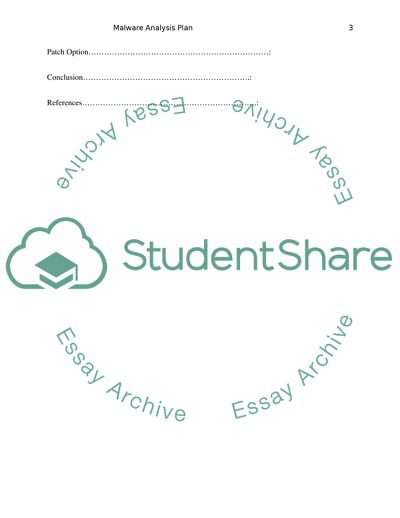Cite this document
(Malware Analysis Plan Research Paper Example | Topics and Well Written Essays - 2500 words, n.d.)
Malware Analysis Plan Research Paper Example | Topics and Well Written Essays - 2500 words. https://studentshare.org/information-technology/1867430-malware-analysis-plan
Malware Analysis Plan Research Paper Example | Topics and Well Written Essays - 2500 words. https://studentshare.org/information-technology/1867430-malware-analysis-plan
(Malware Analysis Plan Research Paper Example | Topics and Well Written Essays - 2500 Words)
Malware Analysis Plan Research Paper Example | Topics and Well Written Essays - 2500 Words. https://studentshare.org/information-technology/1867430-malware-analysis-plan.
Malware Analysis Plan Research Paper Example | Topics and Well Written Essays - 2500 Words. https://studentshare.org/information-technology/1867430-malware-analysis-plan.
“Malware Analysis Plan Research Paper Example | Topics and Well Written Essays - 2500 Words”. https://studentshare.org/information-technology/1867430-malware-analysis-plan.


